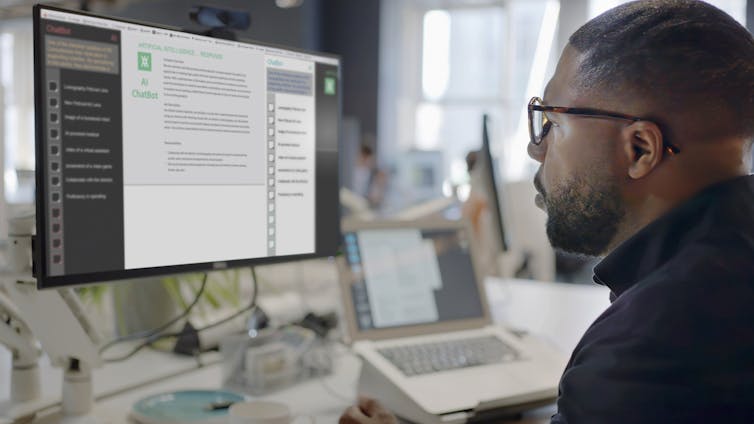Source: The Conversation – UK – By Giorgia Doná, Professor of Forced Migration and Co-director of the Centre for Migration, Refugees and Belonging, University of East London
Anti-migration protesters and counterprotesters have clashed in recent weeks outside of hotels housing asylum seekers. While the protests have not reached the violent scale of the riots in summer 2024, a number of people have been arrested on charges related to violent disorder. Councillors in Epping have called for the closure of asylum hotels in the area.
The UK government has a statutory duty under the Immigration and Asylum Act 1999 to provide accommodation to asylum seekers while their claims are being assessed if they would otherwise be destitute.
Asylum hotels have only been used at scale relatively recently. Home Office figures show that as of March 2025, 32,345 asylum seekers were housed in 218 hotels, down from a peak of more than 56,000 in more than 400 hotels in September 2023.
Read more:
How the UK became dependent on asylum hotels
As well as the financial costs, long term use of hotels poses numerous challenges to those living there. This includes loss of privacy and independence, lack of access to cooking facilities, exclusion from meaningful activities and social isolation.
The government has pledged to end the use of hotels by 2029, by moving asylum seekers to more cost-effective accommodation. This is expected to mean expanding the use of former military barracks, and working with local authorities to house people.
Here are three alternatives to asylum hotels and what they would mean for those living there and the surrounding communities.
1. Large-scale sites like military bases
Large former military sites such as Wethersfield air base in Essex are currently used to house asylum seekers, and are set to be expanded.
These sites are known for their poor conditions inside. An all-party parliamentary group report described these kinds of facilities as quasi-detention. They are overcrowded and isolated, with inadequate access to healthcare and legal services. Acts of self harm have been reported at such sites.
One site, Napier barracks, has been slated for closure after years of concerns about overcrowding and poor conditions. Keir Starmer also said during the 2024 election campaign that Wethersfield should close – though it is now one of the sites targeted for expansion.
Scaling up these facilities also risks replicating the community tensions associated with hotels. There have been demonstrations and unrest at large accommodation sites already.
2. Community-based housing
Arguably the best opportunity for addressing the hotel issue is reviving partnerships between the Home Office and regional and local governments.
A model for this already exists. The “dispersal system”, introduced by the Immigration & Asylum Act, offers eligible asylum seekers accommodation in communities around the UK to ease pressure on particular areas. Before this, asylum seekers tended to seek accommodation primarily in London and the south-east.
At present, 62% of asylum seekers awaiting a decision are accommodated by this system, primarily in shared housing.
Since 2012, the Home Office has contracted private companies to source this accommodation. Local authorities have been largely cut out, and research has found that accommodation standards have been lowered considerably.
For the system to be an effective alternative to hotels, partnerships with local authorities should arguably be brought back in. Regional and local governments have crucial knowledge of the housing stock, and connections with landlords and housing providers. Local authorities have also expressed concern with housing standards, availability and competition under the current privatised system.
Lessons can be learned from local government management of asylum housing in the 2000s. This system allowed for more robust oversight of accommodation standards, and better integrated local support and welfare services with accommodation.
Local authorities are better placed than private contractors to ensure that the management of asylum accommodation is mindful of how it relates to the wider community.
Inspiration might be drawn from the UK’s recent Syrian and Afghan resettlement schemes. These have been organised through effective partnerships with local authorities, reflecting developments across Europe.
A clause allowing for an early break in asylum accommodation contracts in 2026 offers the opportunity for reform. But given the massive pressures on local government budgets, much will depend on what financial support the Home Office is prepared to put towards this process.
A recent report from asylum charities proposes a subsidy scheme to support local and regional authorities in purchasing and renovating homes for asylum seekers and others in need of temporary housing.
3. Homestays
A novel alternative to housing asylum seekers is to welcome them into people’s homes. This is probably the most radical option. But it has previously been used, in the UK, at scale: the Homes for Ukraine scheme connected over 150,000 people seeking refuge with people willing to host them.
In May 2023, one of the architects of the plan, Dr Krish Kandiah, urged the government to adopt a similar scheme for refugees from Sudan. Foster care placements for unaccompanied children seeking asylum have also had positive outcomes.
Read more:
‘Friends for life’: how living with locals helped refugees feel at home in a new country
While evidence suggests that it is easier to find hosts for women and children, in European countries homestay accommodation is becoming a complementary option to mainstream models.
In Germany, homestay offers a flexible alternative to traditional reception systems that host asylum seekers separately from residents. In Italy, coabitazioni solidali (individuals sharing spaces under the principle of solidarity) operate across the country. As the UK government phases out hotels, the use of homestays deserves closer attention.
Even before the recent flare-ups, it was clear that hotel use has become unsuitable and unsustainable housing for asylum seekers. Asylum accommodation needs to be rethought, ideally as part of a broader response to the UK’s housing emergency.
![]()
The authors would like to acknowledge the contributions of Anna Lindley to this piece.
Giorgia Dona, Charlotte Sanders and Paolo Novak do not work for, consult, own shares in or receive funding from any company or organisation that would benefit from this article, and have disclosed no relevant affiliations beyond their academic appointment.
– ref. As protesters and politicians call for the closure of asylum hotels, what are the alternatives? – https://theconversation.com/as-protesters-and-politicians-call-for-the-closure-of-asylum-hotels-what-are-the-alternatives-262270




















